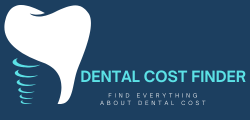Dental Insurance Guide – What’s Covered & How It Works
Wondering how dental insurance works and what treatments are covered? This guide breaks it all down — so you can make smart, budget-friendly decisions before sitting in the dental chair.
🦷 What Does Dental Insurance Usually Cover?
Most U.S. dental plans follow a “100-80-50” structure:
- ✅ 100% for preventive care (cleanings, X-rays, exams)
- ✅ 80% for basic procedures (fillings, extractions)
- ✅ 50% for major services (crowns, root canals, bridges)
Your actual coverage depends on your insurance provider and plan tier. Most plans include an annual max limit — usually between $1,000 and $2,000.
❌ What Dental Insurance Doesn’t Cover
- ✖️ Cosmetic treatments like teeth whitening and veneers
- ✖️ Most plans don’t fully cover dental implants
- ✖️ Orthodontics are often excluded for adults unless added as a rider
💬 Common Insurance Terms
- Premium: Your monthly payment to keep the plan active
- Deductible: The amount you pay out-of-pocket before insurance applies
- Copay/Coinsurance: What you pay per treatment even after coverage
- Annual Maximum: Yearly limit the insurance will pay toward your care
🏷️ PPO vs HMO – Which Dental Plan Should You Choose?
Most patients choose a PPO (Preferred Provider Organization) for its flexibility. You can visit any dentist, though staying in-network saves more. HMO (Health Maintenance Organization) plans are more affordable but restrict you to a specific dental network.
📉 How Our Estimator Helps — With or Without Insurance
Dental Cost Finder shows average full-service prices — before insurance. If you’re insured, check your coverage rate (e.g., 80% for fillings), and subtract it from our estimates to find your true out-of-pocket cost.
No login, no signup — just search by procedure and location to compare prices.
📞 Tips for Getting Insurance-Backed Treatment
- 📋 Ask your provider if pre-authorization is needed for major procedures
- 📅 Check if there’s a waiting period before benefits start
- 📂 Confirm if your dentist is in-network to avoid surprise fees
🧾 What If You Don’t Have Insurance?
Many providers offer payment plans or in-house memberships. Our estimator is especially useful for uninsured patients to avoid overpaying or guessing.
📬 Need Help Understanding Coverage?
We don’t sell insurance, but we help you understand how it affects treatment cost. Use our Get a Quote tool or contact us with questions — we’ll walk you through it.
🧠 Frequently Asked Questions About Dental Insurance
1. What is the difference between dental and medical insurance?
Dental insurance focuses on preventive and restorative oral care like cleanings, fillings, crowns, and braces. Medical insurance typically excludes dental services unless they’re related to emergency surgery or injury.
2. Does dental insurance cover implants?
Most standard plans do not fully cover implants. Some premium or employer-sponsored plans may offer partial reimbursement. Always confirm with your insurer before scheduling treatment.
3. Can I use my dental insurance immediately?
Many plans have a waiting period (3–12 months) before covering basic or major procedures. Preventive care is often available immediately. Check your plan details.
4. What happens when I reach my annual maximum?
Once your insurer pays out the full annual limit (e.g. $1,500), any remaining dental costs are 100% your responsibility until your coverage resets next year.
5. Are there dental plans that cover cosmetic work?
Very few plans cover cosmetic treatments like whitening or veneers. If they do, it’s usually through an added cosmetic rider or high-tier policy.
6. Is dental insurance worth it if I have healthy teeth?
If you only need cleanings and checkups, dental insurance may still be cost-effective by covering preventive visits fully. However, paying out of pocket could be cheaper depending on the plan’s premium and your usage.
